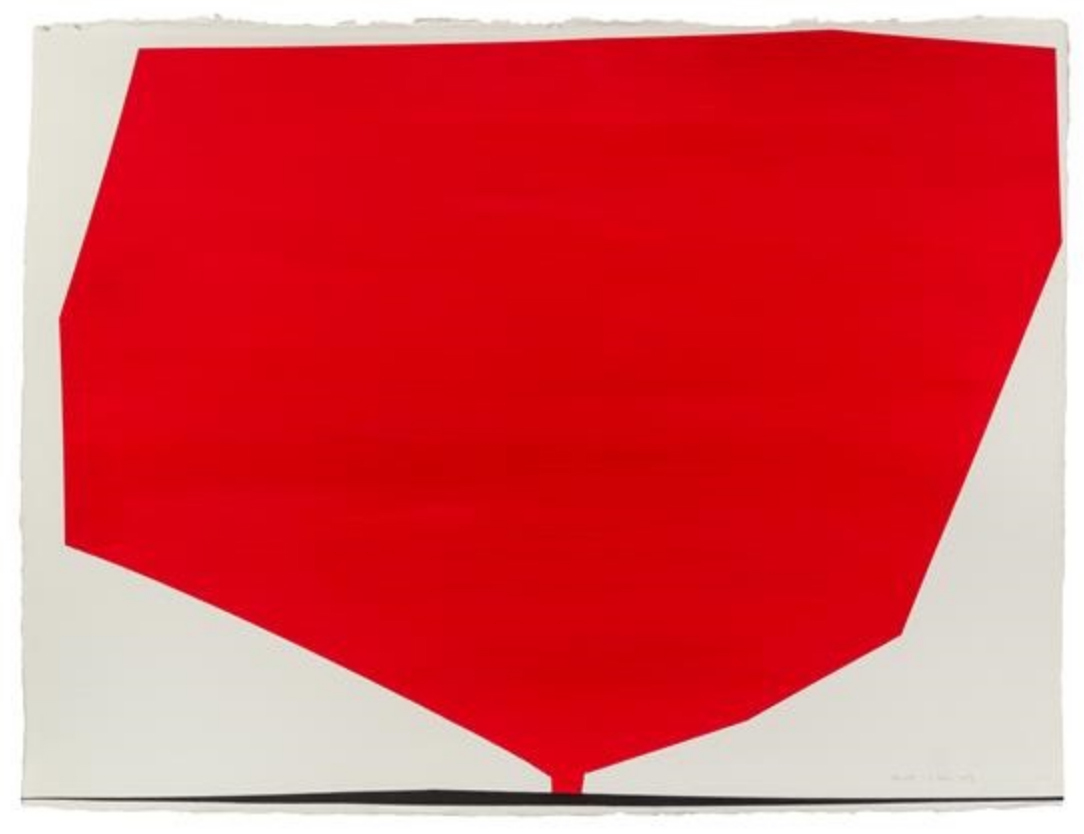
Anne Truitt, 1 Dec '87. Acrylic on paper, 1987.
Many years ago, shortly after the birth of my second child, I was away from my studio, seeking a kind of deep creative nourishment, and I found it in the writings of Anne Truitt. An artist, writer, and mother, she thought deeply about all of those things, questioning everything from perspective to phenomenology, illusion to dimension to fabrication. For Truitt, perception was kinetic, hovering on thresholds that she once described as the point at which the abstract nature of events becomes perceptible.
Like a turning point.
Turning is a curious word, with multiple resonances and readings. It can be invoked as something positive (you turn a profit, or a corner, or a new leaf) or progressive (you turn a page, or a year older). It can present as a shift or a pivot, a rotation or a migration, a kind of orbit—like turning in ceramics, where centrifugal force mediates the relationship between speed and gravity.
But turning can also present as a form of resistance or a provocation, like turning your back on someone, or turning the tables on something, or the irrevocable realization that there’s no turning back from a decision. It can be a disturbance, an act of antagonism, or a radical shift from its point of origin–even a synonym for spoilage, like when wine turns because its bacteria is exposed to oxygen.
Still, at its core, turning conjures all that is transformational: day turns to night, winter turns to spring, and yes, wine turns to vinegar. But the planet continues to turn on its axis. Cycles repeat. Rotations renew. Life carries on.
A closer read—and likely Truitt’s chosen one—is that turning is a deliberate and conscious act. It’s how we express attentiveness. We turn toward the light, like a plant turns toward the sun. Emerson believed we should learn to detect and watch that gleam of light which flashes across the mind from within. To mind the light—a Quaker adage that suggests we see contemplatively—is one way to think of that kind of turning. (And a very Emersonian notion, reminding us that illumination comes from greeting your own mind, honoring your own conscience, going—and staying—within.)
Truitt published three books in her lifetime, the second of which she titled Turn, possibly because she believed that in order to see things as they really were, she needed to stay open and alert, to keep her receptivity high at all times: to stay, in her own words, turned on. But tuning into this frequency was also a measure of deep self-reliance: deliberate, intentional, focused, and alive. Of merging the life of the family with the life of the mind, she once confessed; I lived an outside life, but really I was living an inside life.
We are all hovering on thresholds of abstraction right now, and perception—ever kinetic—reminds us that life itself can turn on a dime. People wish to be settled; Emerson once observed, yet only as far as they are unsettled is there any hope for them. Truitt’s inside life is Emerson’s inside light: a naturally growing, ever-widening, and endlessly renewable source of creative nourishment. Find yours. Treat it well. Delight in the capacity of its depth and potential.
And may it never turn on you.
The Self-Reliance Project is a daily essay about what it means to be a maker during a pandemic. Sign up to get it delivered to your inbox here.
